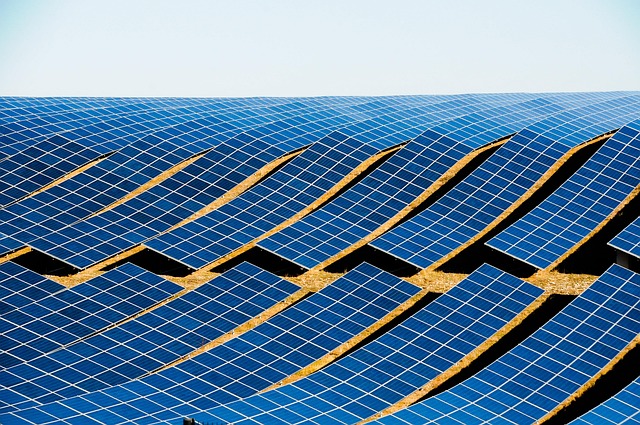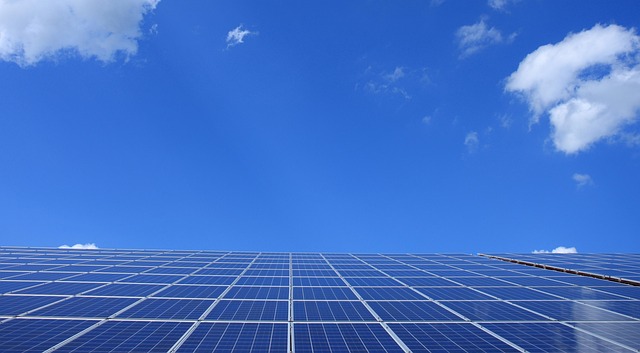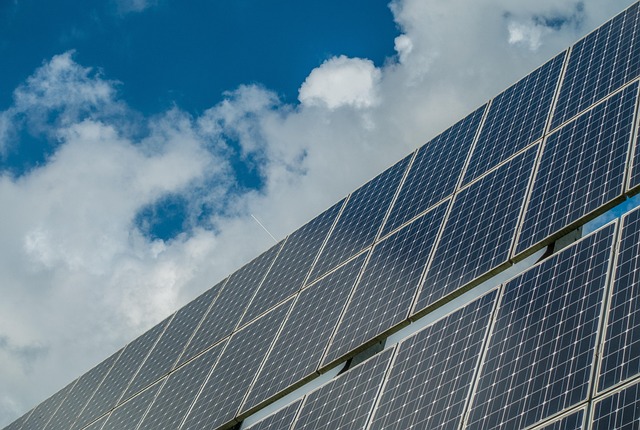Evaluate Roof Condition: Sun Exposure & Real Estate Value

Examine roofs for damage like cracks, missing shingles, and faded colors in real estate assessments…….
Welcome to an in-depth exploration of solar-installations, a technology at the forefront of the global transition towards renewable energy. This comprehensive guide aims to illuminate the various facets of solar power systems, their impact on our planet, and their potential to shape a more sustainable future. By the end of this article, readers will have a thorough understanding of solar-installations’ significance, applications, and the far-reaching implications for both individuals and societies worldwide.
Definition: Solar-installations refer to the setup and integration of solar panels, along with associated components, to harness solar energy for various purposes, primarily electricity generation and water heating. These installations range from small-scale residential systems to large-scale utility-scale power plants.
Core Components:
Historical Context: The concept of harnessing solar power dates back to the 19th century, but it was in the late 20th century that significant advancements led to its widespread adoption. The first practical PV cell was developed by Bell Laboratories in 1954, and over the following decades, research and development efforts continued, refining the technology. The early 2000s marked a turning point with improved efficiency, reduced manufacturing costs, and growing environmental awareness, making solar power a viable alternative to fossil fuels.
Significance: Solar-installations play a pivotal role in mitigating climate change by providing clean, renewable energy. They offer a sustainable solution to reduce greenhouse gas emissions, especially from the electricity sector, which is a major contributor to global warming. By harnessing a limitless and free source of energy, solar power helps combat energy security concerns associated with finite fossil fuel reserves.
International Influence: The adoption of solar-installations has been transformative on a global scale. According to the International Renewable Energy Agency (IRENA), the total installed solar capacity worldwide reached an impressive 724 GW in 2021, representing a significant growth rate over the past decade. This rapid expansion is evident across various regions:
| Region | Installed Solar Capacity (GW) in 2021 | Growth Rate (2020-2021) |
|---|---|---|
| Asia-Pacific | 357 | 18% |
| North America | 147 | 22% |
| Europe | 120 | 15% |
| Latin America & Caribbean | 40 | 20% |
| Middle East & Africa | 37 | 25% |
Trends Shaping the Sector:
Market Dynamics: The global solar market has experienced tremendous growth, driven by the aforementioned trends and increasing environmental concerns. According to a report by Grand View Research, the global solar PV market size was valued at USD 165.4 billion in 2020 and is projected to expand at a compound annual growth rate (CAGR) of 23.7% from 2021 to 2028.
Financial Benefits:
Challenges and Opportunities: While solar power offers significant economic advantages, there are challenges related to upfront capital costs and potential fluctuations in policy support. However, the long-term financial benefits and growing market demand create attractive investment opportunities for individuals, businesses, and governments alike.
Residential Solar: Homeowners have embraced solar power as a way to reduce energy costs and contribute to environmental sustainability. Small-scale solar installations on rooftops typically consist of several panels connected to an inverter, serving the electrical needs of the residence. Net metering allows excess energy to be fed back into the grid, potentially earning credits or revenue.
Commercial Solar: Businesses are also leveraging solar-installations to reduce operational costs and enhance their environmental reputation. Commercial installations can range from large arrays on industrial buildings to ground-mounted systems that serve multiple structures. These projects often involve advanced monitoring systems to optimize energy production and provide long-term financial benefits.
Emerging Technologies:
Research Focus Areas:
Solar-installations have a minimal environmental footprint compared to traditional fossil fuel-based electricity generation. Here’s how they contribute to sustainability:
Government Initiatives: Governments play a crucial role in promoting solar energy through various policies and incentives. Some key measures include:
Community Engagement: Local communities are actively advocating for solar power through grassroots movements, community solar projects, and partnerships with utility companies. These initiatives ensure that renewable energy benefits are accessible to all segments of society.
Despite its numerous advantages, the widespread adoption of solar-installations faces challenges:
The solar revolution is underway, transforming the way we generate and consume energy. Solar-installations offer a clean, sustainable, and cost-effective alternative to traditional energy sources. With ongoing technological advancements, policy support, and growing public awareness, solar power is poised to play an even more significant role in shaping a sustainable future for generations to come.

Examine roofs for damage like cracks, missing shingles, and faded colors in real estate assessments…….

Optimizing energy consumption in real estate through targeted upgrades, smart home automation, and r…….

Real Estate professionals can significantly reduce electricity expenses through energy consumption e…….

Real estate stakeholders can significantly reduce energy bills and increase property value by conduc…….

Real estate investors and owners can significantly reduce electricity expenses by assessing energy c…….

Photovoltaic (PV) technology is transforming real estate by offering sustainable and cost-efficient…….

In the digital age, eco-friendly features like energy-efficient appliances, solar panels, water cons…….